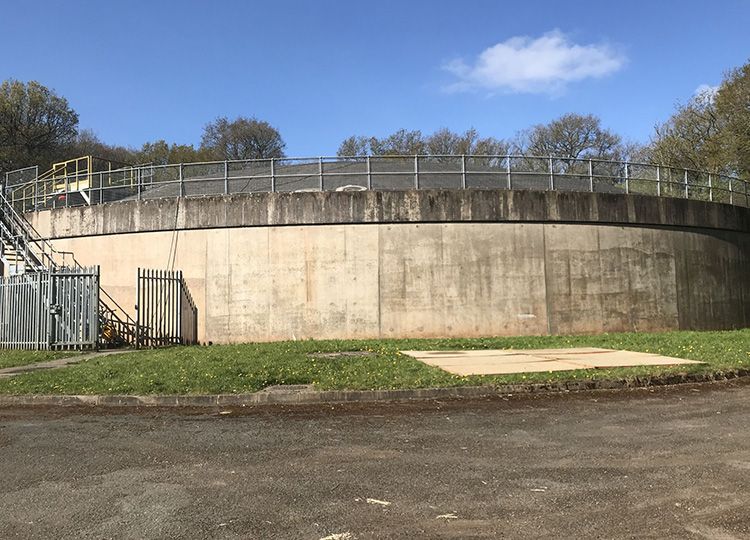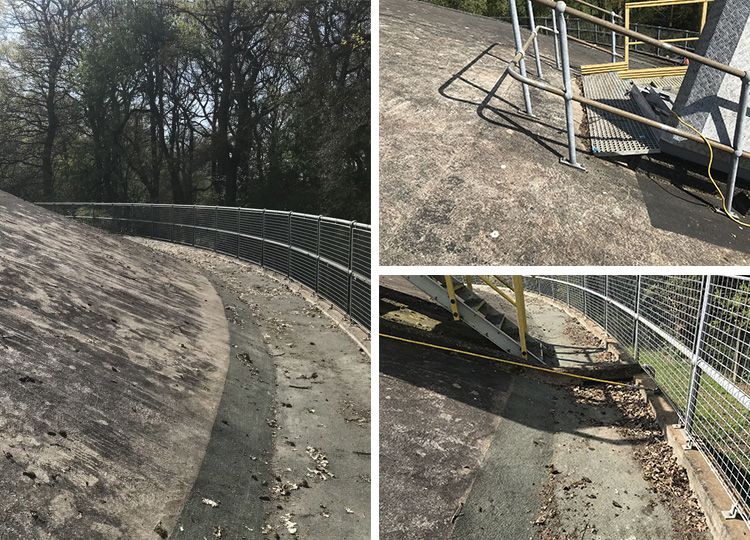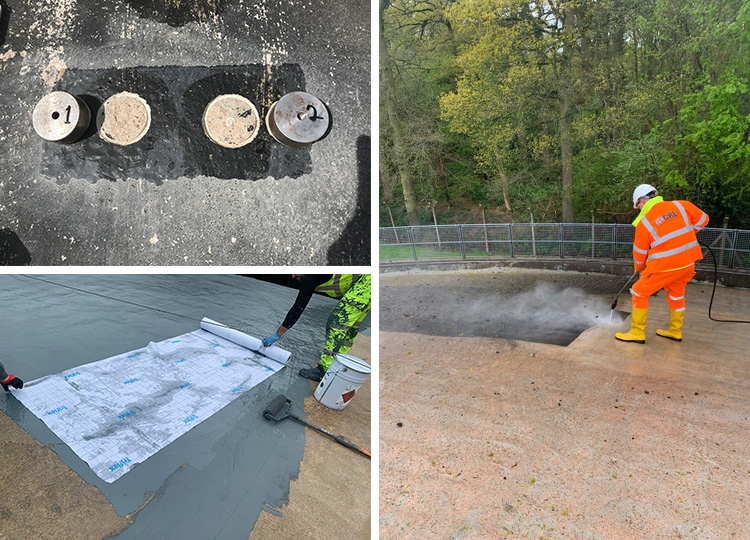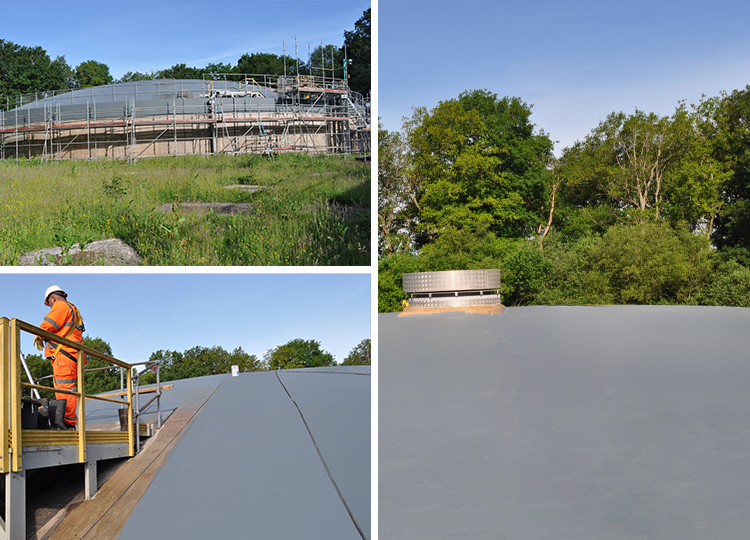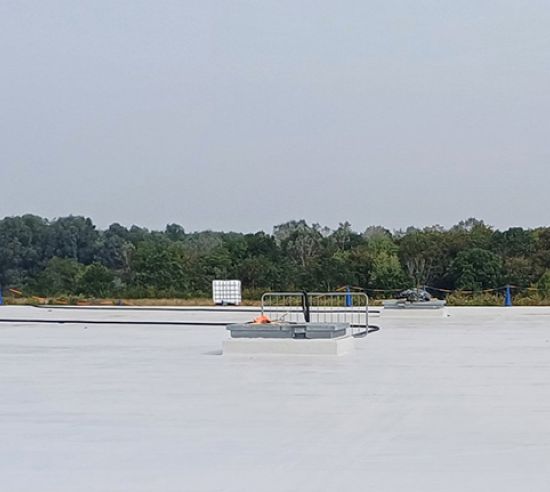Introduction
Two above ground water tanks form this service reservoir. Built in 1980, the circular water storage tanks have domed concrete roofs. As part of a repair and refurbishment project the roofs required a removal of the existing roof covering and a new waterproofing membrane installation.
The challenge
The 49m diameter domed roofs had an existing unknown coating around the flatter perimeter of the dome, which originally may have helped demarcate an access path. This perimeter coating was showing signs of deterioration and delamination, with its condition making it difficult to assess whether this had originally had and anti-skid surface to increase safety of staff gaining access. Surface drainage ports are also located in the perimeter upstands. Many coatings are not hydrolysis resistant, meaning they can break down in water, as may have been the case here.
In addition there was evidence of an existing black coating around the access hatches, and also some evidence of cracking which required attention. Following repair works by Triflex authorised contractor CRL, which included hatch re-bedding, circumferential sealant joint replacement, sealing of cable entry points and drainage renewal, a waterproofing, surfacing and protection roof covering system was required that could meet a 20-year design life.
The solution
Triflex worked closely with CRL to assess the existing substrates and provide a bespoke project specification that met the 20 year design life. The Triflex Technical team carried out a range of testing which included cohesion and adhesion tests on the uncoated and coated areas of the concrete roof. The results of which determined the most appropriate preparation, priming and waterproofing solution.
The proposed waterproofing system was Triflex ProTect which has proven adherence to a wide range of substrates, including those often perceived as difficult. The system utilises Triflex reinforced PMMA resin technology, and incorporates Triflex ProDetail for outstanding waterproofing of all details.
Cohesive and adhesive strength testing revealed that Triflex ProTect adhered well to the existing unknown perimeter coating. However, the existing coating was not bonded sufficiently well to the concrete substrate to be confident with an overlay solution. It was therefore recommended to remove the existing perimeter coating, and install the new system on the concrete substrate. Here the Triflex ProTect waterproofing system with embedded anti-skid beads was chosen to provide a fully bonded walkway solution. Provision of a colour variant further helped demarcate areas for maintenance access.
The on-site tests also showed that the Triflex system bonded strongly to the unknown black coating surrounding the hatching areas, validating the use of Triflex ProDetail as an overlay solution in these areas. The reinforced system provides tough and durable waterproofing that easily accommodates many awkward forms.
The uncoated area of the central dome simply required a clean with jet wash prior to priming and installation of the system. Here, any cracks were over banded and with the Triflex ProTect system certified to EN 1504-2: B4.2 (-20°C) for dynamic crack bridging, will deliver long term peace of mind. Application of the liquid waterproofing membrane on the dome was facilitated by the use of a small addition of liquid thixo agent, which provided a thicker medium to work with during the installation of the system.
The Triflex ProTect system still retains its rapid curing properties, meaning that it is rainproof in 30 minutes and fully cured in an hour. All works were carried out to a high standard by Triflex authorised contractor CRL Ltd.

